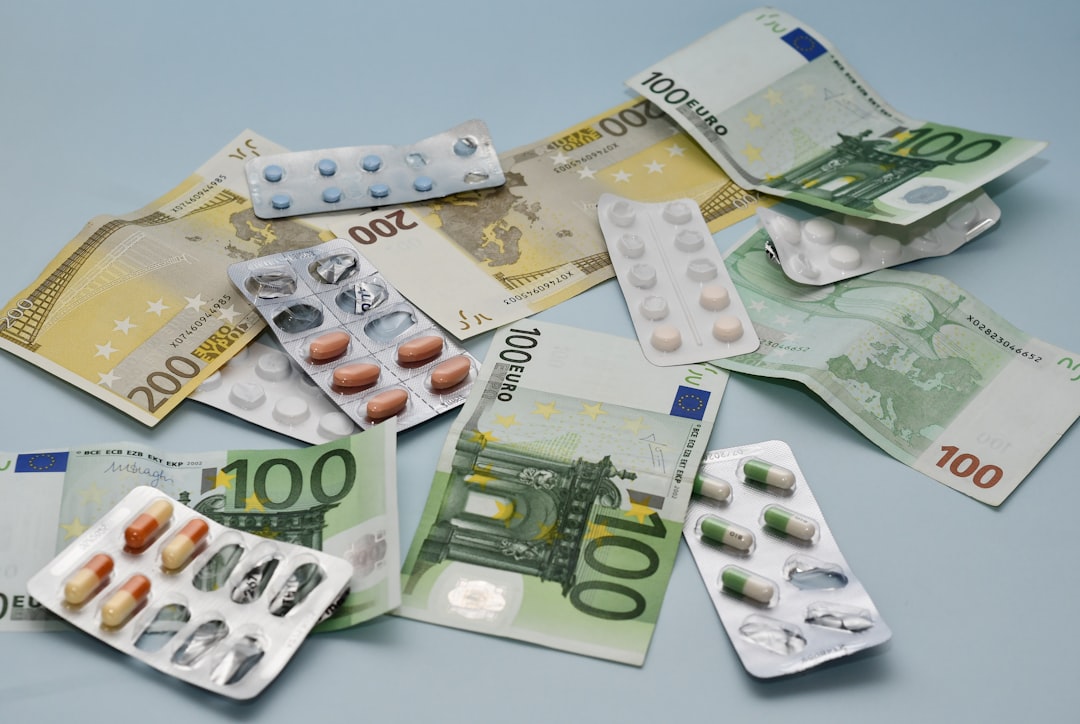

Engage prospects with a scan and streamline customer engagement with FREE QR code marketing tools by Sona – no strings attached!
Create a Free QR CodeFree consultation

No commitment

Engage prospects with a scan and streamline customer engagement with FREE QR code marketing tools by Sona – no strings attached!
Create a Free QR CodeFree consultation

No commitment
Medical billing services face rising patient expectations, strict regulatory requirements, and an urgent need to capture actionable feedback for real improvement. Traditional feedback collection methods often rely on outdated analog processes such as paper surveys, emails hidden within statements, or phone calls that typically see low participation. These manual approaches not only generate low response rates but also introduce delays and errors, which can block ongoing improvement and weaken patient engagement.
As healthcare revenue cycle management and patient billing tools advance, QR codes have emerged as a powerful way to seamlessly connect offline experiences to digital feedback. Placing QR codes on billing statements, post-visit receipts, or insurance documents enables providers to collect feedback in real time with minimal effort from patients. This quick and efficient process uncovers hidden pain points, such as unclear billing details or miscommunications, allowing issues to be addressed before they affect patient satisfaction or create compliance risks.
When QR codes are integrated with electronic health records and secure digital workflows, medical billing teams are empowered to deliver seamless, accessible feedback channels, reduce friction, and use every billing interaction as an opportunity for engagement and improvement. These modern solutions support faster, richer feedback loops, help ensure that no important insights are lost, and aid in meeting compliance as well as operational objectives. Evidence shows meaningful gains in patient engagement%20(1)%20(1).pdf).

QR codes bridge the gap between physical billing communications and digital feedback collection, enabling medical billing services to streamline processes, improve efficiency, and gather high-quality insights that drive operational excellence. When feedback mechanisms are disconnected or easy to overlook, critical learnings about billing clarity, payment friction, and claims resolution are lost. Disengaged patients are less likely to report problems, which leads to ongoing billing frustrations, delayed collections, and missed opportunities for service recovery.
To turn each billing interaction into a measurable, improvement-focused touchpoint, align QR code initiatives with clear goals and visible calls to action. Equip every printed and in-person channel with a short, benefit-driven reason to scan, and route scans to the right destination using dynamic, secure links. By making feedback effortless, you will increase participation and improve the quality of data used to refine policies, scripts, and billing workflows.
Advanced platforms now automate these workflows: creating HIPAA-compliant dynamic QR codes, tracking performance, and sending patient insights directly into CRM or billing software for timely action. With solutions like Sona QR, teams can centralize code management, update destinations without reprinting, and trigger follow-up workflows that ensure no patient concern falls through the cracks.
Analog approaches such as paper surveys, static links, and manual callbacks create friction and gaps. QR-powered workflows transform these bottlenecks into seamless, measurable interactions that scale across locations and service lines. Patients no longer have to type long URLs or wait on hold to share a concern. Instead, they scan once and are guided to a mobile-friendly form that routes their feedback to the right team.
Digitizing these processes reduces administrative burden and increases data reliability. Structured fields prevent ambiguous responses, while branching logic routes patients to payments, support, or education. This orchestration accelerates service recovery and reinforces trust with transparent follow-up.
Platforms like Sona QR support secure, measurable QR-based feedback workflows that help medical billing operations surface issues quickly and adapt to changing patient needs. With centralized control, you can retire slow analog processes and deliver consistent, compliant experiences.

In medical billing, clarity and speed matter. Patients want straightforward bills, responsive support, and confidence that their information is handled securely. QR codes help teams meet these expectations by removing friction from paper-heavy communications and creating a direct bridge to digital action. Instead of hoping patients read fine print or find a web address, a QR scan initiates the right task immediately: feedback submission, payment resolution, or live assistance. Adoption is also rising in medical marketing.
This shift also enables deeper insight into patient behavior. When scans are tracked by placement and time, billing leaders can see which messages work, where confusion arises, and how quickly issues get resolved. These data points inform continuous improvement efforts, from simplifying statement layouts to refining educational content and scripts for staff.

Medical billing teams use a variety of QR formats to align with patient needs and operational goals. Selecting the right format ensures a smooth journey from scan to action and keeps sensitive data protected. In most billing environments, the top formats route to surveys, payment pages, or secure messaging, and they can be branded and configured for language, device, and accessibility.
Dynamic QR codes are particularly valuable since they can be updated if a portal changes or if you want to run A/B tests on survey flows. They also enable detailed analytics and integrations with CRM and billing platforms, which supports continuous optimization and reliable audit trails.
These formats prevent fragmented workflows and static communications. By aligning each code with a clear outcome, billing teams can turn every patient touchpoint into a measurable step toward resolution and satisfaction.

The best QR deployments meet patients where they already are. Medical billing operations produce a wide range of physical and digital artifacts, from statements and receipts to reminder cards and discharge packets. Adding QR codes to these materials activates new data streams and reduces the friction patients often encounter when looking for help or clarity about their bill.
Focus first on high-friction points where confusion and frustration tend to spike. That is where a well-placed QR code with a clear promise can deliver disproportionate impact. Treat each placement as a mini-experiment, then refine based on scan and outcome data.
Connecting QR codes to these moments captures timely, actionable insights that would otherwise disappear in disconnected systems or after-the-fact phone calls.

QR codes shine when embedded directly into the revenue cycle. By placing them where questions naturally occur, you increase participation and gather data that informs both patient communication and back-office optimization. Each use case can be tailored to your organization’s structure, staffing, and regulatory posture.
Combining these use cases creates a full-funnel approach: education and pre-visit data capture before a patient arrives, real-time feedback during checkout, and issue resolution after the statement lands in the mailbox. The result is a more responsive, data-informed billing experience that supports trust and loyalty.
Every QR scan generates valuable context: the material scanned, the time and location, and the action taken. When you capture and label those signals, you can create behavior-based segments that guide outreach. This approach turns anonymous scanning into actionable intelligence that improves patient communication and follow-up quality.
Segmentation also supports compliance and patient preference management. For instance, patients who express frustration with a bill should be placed into a sensitive handling workflow with proactive outreach, while patients who report positive experiences may be invited to share a testimonial or receive a portal adoption tip.
Modern, privacy-focused platforms like Sona QR support this level of segmentation and activation while maintaining compliance safeguards and audit trails. To activate these audiences across channels, use Sona intent retargeting.
QR codes connect print, physical spaces, and digital ecosystems. When combined with email, SMS, and patient portals, they create a coherent journey from initial billing to resolution. Integrating QR interactions across channels ensures consistent messaging, reduces redundancy, and unlocks deeper analytics because you can see how each touchpoint influences the next.
Start by mapping your top patient journeys: from receiving a bill to making a payment, or from receiving a denial to submitting corrected information. At each step, place a QR-triggered action that reduces friction, and ensure that scan activity syncs to your CRM and analytics stack for a complete view of engagement.
Central management tools like Sona QR let teams monitor performance and make data-driven adjustments across channels for maximum consistency and impact.
A disciplined approach is essential for successful QR campaigns in medical billing. The following steps help you focus your strategy, ensure scannability, and create a feedback loop that drives measurable improvement across statements, claims, and post-visit communications.
Start by choosing a single, high-impact use case that aligns with a measurable business goal. Examples include improving feedback response rates on statements, accelerating first-pass payments, or reducing call volume related to EOB confusion. Narrow focus builds momentum and makes it easier to prove value before scaling.
Define what success looks like in concrete terms. For instance, aim for a 2x increase in feedback participation within one billing cycle or a 15 percent reduction in payment-related calls in 60 days. Medical billing teams often see quick wins when they begin with statement feedback because the context is immediate and the pain points are specific.
Select the QR format that supports your objectives and compliance posture. Dynamic QR codes are recommended for medical billing because they allow you to update destinations without reprinting and provide analytics such as scan counts and device types. They also support integrations with CRM and ticketing systems for faster follow-up.
Static codes are suitable for evergreen resources like a general billing FAQ. If you want data, retargeting, or the flexibility to change your destination later, use dynamic codes. Platforms like Sona QR support both formats with centralized governance and role-based permissions.
Design with clarity and trust in mind. Add your logo, include a short promise-driven CTA such as “Scan to share billing feedback,” and provide a plain-language privacy note such as “Your responses are protected and confidential.” Ensure the code contrasts strongly with the background and is sized appropriately for the material and viewing distance.
Test across devices, lighting conditions, and angles. Verify scannability on common smartphones, and check that the destination loads quickly and is accessible. If the QR will be placed on mailed statements, print samples on the same paper stock to confirm scan quality and durability.
Roll out your codes to high-traffic, high-friction materials first. Prioritize statements, receipts, claim forms, and appointment reminders where questions commonly occur. Include a short benefit statement near each code to set expectations and increase scan intent.
Keep placement consistent to train patient behavior. For instance, put the feedback code in the same location on every statement and use the same CTA. In offices, place posters at eye level near checkout or the billing desk. In mailed materials, place codes above the fold and away from smudges or perforations.
Monitor both scan metrics and outcomes. Measure response rates, completion rates, time to resolution, and any changes in payment velocity. Use cohort analysis to compare QR-enabled materials to previous analog benchmarks so you can quantify impact and iterate with confidence.
Refine your strategy based on the data. Test different CTAs, code sizes, and placements. If a code on the second page of a statement underperforms, move it to the first page with a clearer benefit statement. Update workflows based on sentiment insights to prioritize escalations and improve service recovery.
A disciplined approach ensures measurable interactions, audit-ready records, and continuous process improvement across the revenue cycle.
QR-driven data capture creates an end-to-end view of how patients move from awareness to action within the billing journey. When scan activity is linked to feedback outcomes, payment behavior, and support resolution, billing leaders can attribute operational improvements to specific QR placements and messages. This evidence strengthens business cases for continued investment and helps prioritize future initiatives.
Avoid relying only on aggregate metrics such as total scans. Segment by material type, clinic, payer, and time of day. Then connect those scans to resolved tickets, payment completions, and sentiment trends. With Sona QR and Sona, an AI-powered marketing platform that turns first-party data into revenue, you can enrich scan data in your CRM, automate downstream workflows, and attribute revenue impact with multi-touch analytics. For framework details, see Sona offline attribution and Sona multi-touch models.
Privacy-focused, HIPAA-compliant analytics help you surface these insights securely and build reliable patient engagement strategies without compromising consent or data protection.
QR campaigns succeed when teams align on goals, educate staff, and build automation around each scan. Without governance and training, codes can be placed passively, which reduces scan intent and limits data capture. With the right frameworks, your program becomes a continuous improvement engine that scales across departments and locations.
Tailor your approach to the materials you use most. For example, clinics with heavy statement volume should prioritize statement feedback and payment codes, while hospital systems that handle complex claims may see outsized returns by focusing on EOB clarifications and financial counseling pathways.
For creative deployment, add QR codes to financial assistance brochures that route to pre-screen forms, or place a code on the payment envelope that says “Scan to pay or ask a question” to capture intent before the envelope is mailed back.
Organizations that replace analog processes with QR-enabled journeys consistently report better outcomes. The effect is strongest when codes are linked to specific actions with clear value, such as resolving a confusing charge or requesting a callback at a convenient time. When execution is disciplined and measurement is robust, leaders see fewer unresolved tickets, faster payments, and improved patient engagement.
Below are examples that illustrate how QR codes can transform medical billing workflows and patient engagement. Use them as starting points, then tailor their elements to your own materials and audience.
Operational leaders report efficiency gains, simpler compliance, and stronger patient follow-up. Surveys show patients prefer quick QR-enabled tools over slower, traditional channels because they are convenient, transparent, and mobile friendly.
Success with QR codes in medical billing comes from alignment across design, placement, analytics, and follow-through. Teams that set clear goals, tailor CTAs to context, and build automation around each scan see the biggest impact. Teams that treat QR as an add-on without measurement or ownership often see flat results.
Avoid common pitfalls with proactive planning. Establish governance for code creation, define naming conventions, and centralize management to prevent duplicates or expired destinations. Periodically review scans and outcomes to ensure the experience remains relevant and compliant.
QR codes in medical billing services offer more than a modern feedback option. They enable data-driven growth, patient-focused engagement, and measurable improvements throughout the revenue cycle. By surfacing previously hidden pain points, streamlining payments and claims, and providing secure, actionable feedback at every step, QR-powered workflows support strategic progress.
Top organizations will use these capabilities to close the gap between patient experience and operational results, align offline and online touches, maintain compliance, and turn every print communication into an opportunity for insight and excellence. With platforms like Sona QR and Sona.com, you can generate your first codes in minutes, manage them centrally, integrate with your CRM and billing systems, and connect scans to real outcomes that matter for your patients and your business. Start creating QR codes for free.
QR codes have revolutionized medical billing services by transforming traditional feedback collection into a seamless, real-time engagement channel. By integrating QR codes, providers can effortlessly gather patient feedback, improve billing transparency, and enhance overall customer satisfaction—all while streamlining communication and reducing follow-up delays. Imagine instantly capturing precise insights on patient experiences and payment processes, enabling you to refine services and boost trust with every scan.
With Sona QR, creating dynamic, trackable QR codes tailored for medical billing feedback is quick and intuitive. Update your feedback campaigns on the fly without reprinting materials, monitor scan data to identify trends, and connect those interactions directly to service improvements and revenue optimization. No more guesswork—just actionable data that drives better patient relationships and operational efficiency.
Start for free with Sona QR today and turn every patient scan into valuable feedback, improved billing experiences, and measurable growth.
Medical billing services manage patient billing by collecting payments, resolving claims, and gathering feedback through digital tools like QR codes that connect printed materials to online surveys and support systems.
Medical billing services improve payment speed, reduce errors, increase patient engagement, ensure compliance, and streamline workflows by digitizing feedback and billing processes.
QR codes link physical billing documents to digital feedback and payment portals, enabling real-time patient input, reducing manual errors, increasing response rates, and supporting faster issue resolution.
Providers like Sona QR offer platforms that create HIPAA-compliant dynamic QR codes, integrate with CRM and billing software, automate workflows, and provide analytics for optimizing medical billing services.
By replacing analog methods with digital QR-enabled surveys and automated workflows, medical billing services reduce manual data entry, prevent lost feedback, accelerate claim resolutions, and improve patient communication.
Use Sona QR's trackable codes to improve customer acquisition and engagement today.
Create Your FREE Trackable QR Code in SecondsJoin results-focused teams combining Sona Platform automation with advanced Google Ads strategies to scale lead generation

Connect your existing CRM

Free Account Enrichment

No setup fees
No commitment required

Free consultation

Get a custom Google Ads roadmap for your business






Launch campaigns that generate qualified leads in 30 days or less.
